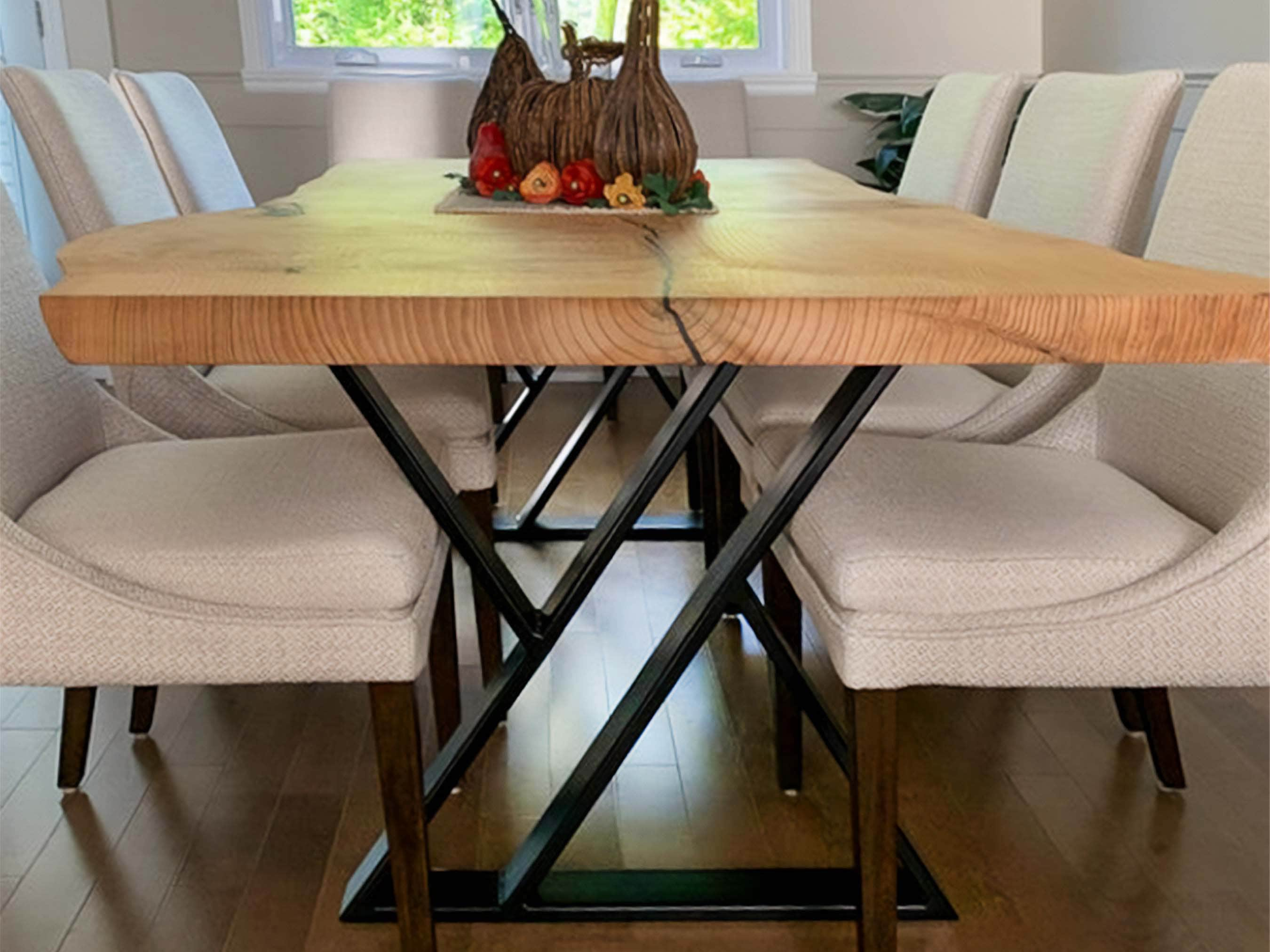Discovering Various Styles for Dining Room Table Legs to Suit Your Aesthetic
Discovering Various Styles for Dining Room Table Legs to Suit Your Aesthetic
Blog Article
A Detailed Consider Eating Table Leg Styles: Finding the Ideal Match
Picking the best dining table leg style is important for both visual charm and useful capability. Standard 4 legs use ageless beauty and stability, while the stand base gives enhanced legroom and a modern-day look. For those with bigger tables, trestle legs ensure sturdy support, whereas hairpin legs introduce a mid-century modern ambiance with their minimalist layout. The x-shaped legs mix contemporary design with enhanced security. Each of these options brings unique advantages, making the choice extra than just an issue of choice. Discover further to find which design completely complements your dining room and way of life.
Conventional Four Legs
Among the various kinds of eating table leg designs, the traditional four-leg style stays an ageless selection for lots of homes. Four legs give well balanced assistance, making certain the table remains secure and qualified of bearing substantial weight (dining room table legs).
From an aesthetic viewpoint, the standard four-leg style can be quickly adapted to various indoor designs. Whether crafted from wood, metal, or a mix of products, these legs can be elaborately carved, smooth and minimalistic, or anything in between. Their convenience allows them to enhance both rustic and contemporary setups seamlessly.
Moreover, the straightforward structure of the four-leg style facilitates simplicity of movement and positioning within a room. Unlike even more complicated bases, this design lessens obstructions, providing enough legroom for diners. In recap, the standard four-leg table leg design marries withstanding beauty with sensible functionality, making it a sharp choice for those looking for both form and feature in their dining furniture.
Stand Base
Usually celebrated for its stylish and space-efficient style, the stand base is a notable alternative to the conventional four-leg setup in eating table leg designs. Without edge legs, restaurants are managed better freedom of movement, making it a perfect option for round and oval tables that promote more intimate and inclusive events.
The central column itself supplies a canvas for detailed styles and imaginative expressions, including an element of aesthetic rate of interest under the table. In recap, the pedestal base incorporates performance with design, making it a fine-tuned and useful alternative for diverse eating atmospheres.
Trestle Legs
Trestle legs provide a durable and timeless structure for dining tables, identified by their horizontal cross-bracing and tough support light beams. Originating from middle ages times, this design has actually evolved yet maintained its vital framework, making it a perennial fave visit this web-site in both traditional and modern settings. The main trestle beam, commonly supported by 2 or even more vertical articles, offers outstanding stability, enabling for bigger table lengths without the requirement for added legs.
A significant benefit of trestle leg tables is the enough legroom they provide. Unlike tables with 4 edge legs, the lack of obstructions at the table's edges gives unimpeded area for chairs and read more restaurants, boosting comfort and ease of access. This makes trestle tables excellent for accommodating larger events, whether in a dining-room or a banquet hall.
The aesthetic adaptability of trestle legs is significant. Available in a variety of materials such as wood, metal, and composite, they can be completed to enhance a large range of interior styles. From rustic farmhouse to smooth contemporary styles, trestle legs can be tailored to fit private tastes. Their enduring appeal and practical benefits make trestle legs a compelling option for those seeking both style and practicality in their dining table.
Barrette Legs

The appeal of hairpin legs depends on their simpleness and versatility - dining room table legs. Available in a series of materials, including steel and brass, they can be completed in various colors to complement different interior designs. Whether combined with a rustic wood table top or a modern glass surface, barrette legs easily blend capability with a touch of classic appeal
Resilience is an additional notable attribute of barrette legs. Regardless of their delicate appearance, these legs are engineered to birth considerable weight, making sure the table stays secure and safe and secure. Additionally, they are fairly simple to set up, making them a popular choice for do it yourself enthusiasts and expert furnishings makers alike.
X-Shaped Legs

Built from materials such as steel, wood, or a mix of both, X-shaped legs can be customized to match various style choices. Steel legs frequently provide a smooth and click site industrial feeling, ideal for loft-style apartments and modern dining spaces.
Furthermore, the design behind X-shaped legs makes certain even weight distribution, minimizing the risk of wobbling and improving resilience. This makes them particularly appropriate for larger dining tables that require extra assistance. In essence, X-shaped legs mix functional engineering with modern visual appeals, making them a classic choice for varied eating atmospheres.
Verdict
An extensive understanding of dining table leg styles discloses the distinct features and benefits of each style. Trestle legs guarantee robust assistance for larger tables, and hairpin legs present a mid-century modern-day aesthetic.
Report this page